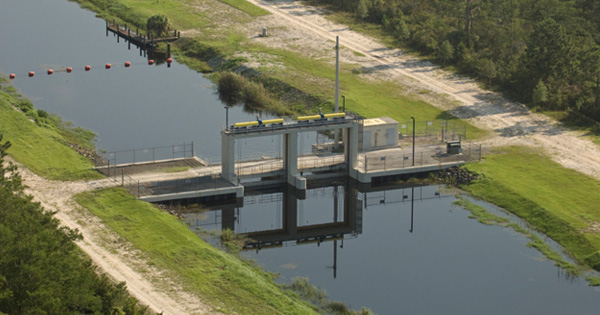
The South Florida Water Management District (District) operates one of the largest water control systems in the world, and our dedicated team of public servants is committed to ensuring this vast system operates smoothly and efficiently all year long.
DID YOU KNOW: This primary system of canals and natural waterways connects to community drainage districts and hundreds of smaller neighborhood systems to move water away from homes and businesses.
A SHARED RESPONSIBILITY: As a result of this interconnected drainage system, flood control in South Florida is a shared responsibility between the District, county and city governments, local drainage districts, homeowners associations and residents.
WHY IT MATTERS: South Florida’s system of canals, levees, pump stations and other important water management infrastructure is key to protecting water supplies and providing flood control for over 9 million people throughout the region.
AN INTERCONNECTED SYSTEM: South Florida's interconnected drainage systems all work together to move water and support flood control in our communities.
They include:
- Neighborhood Systems: Community drainage systems store excess water in local lakes, ponds, swales and streets. Excess water slowly drains to community lakes or ponds through street and yard storm drains. Rainwater runoff then flows through underground pipes to local canals.
- Community Drainage: Local canals as well as pump stations and storage areas are maintained and operated by cities, counties or local drainage districts. These canals receive water from neighborhoods and store excess water or move it to the larger-capacity regional flood control system.
- Regional Water Management: The regional water management system is designed to move the most water as quickly and safely as possible. Aided by pump stations, canals route excess water into storage or to coastal discharge points.
MANAGING WATER RESOURCES THROUGHOUT THE REGION: Using state-of-the-art technology, the District’s water managers monitor the weather around the clock to determine the optimal operation of hundreds of regional control structures located from Orlando to the Florida Keys. The District manages and maintains:
- 2,175+ miles of canals
- 2,130+ miles of levees/berms
- 936+ water control structures
- 620+ project culverts
PLANNING FOR THE FUTURE: The District regularly examines the status of its flood control infrastructure and evaluates adaptation and mitigation strategies to ensure these assets can continue to provide flood control.
Visit SFWMD.gov/FloodControl to learn more about the regional water management system and flood control in your community.
